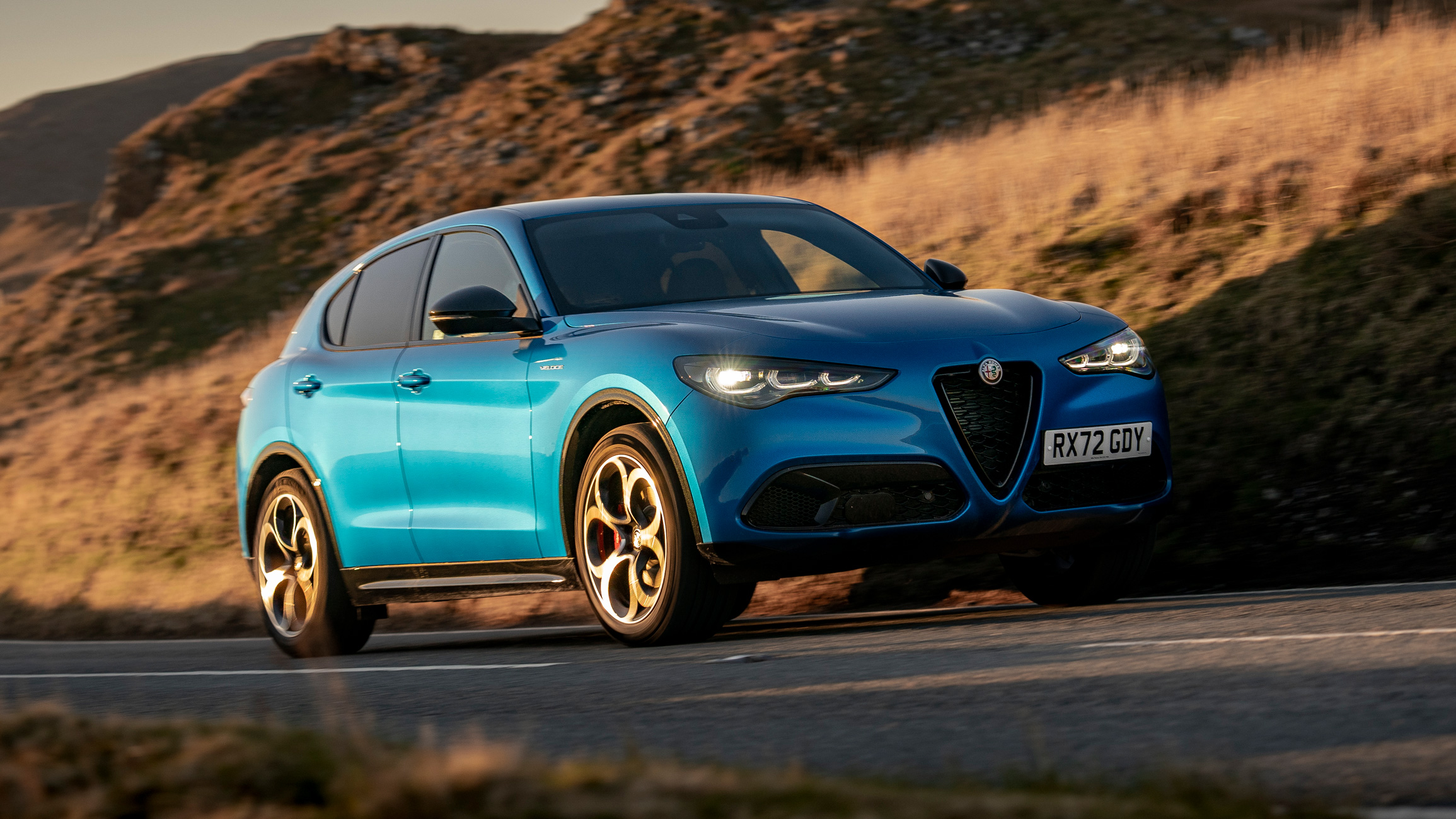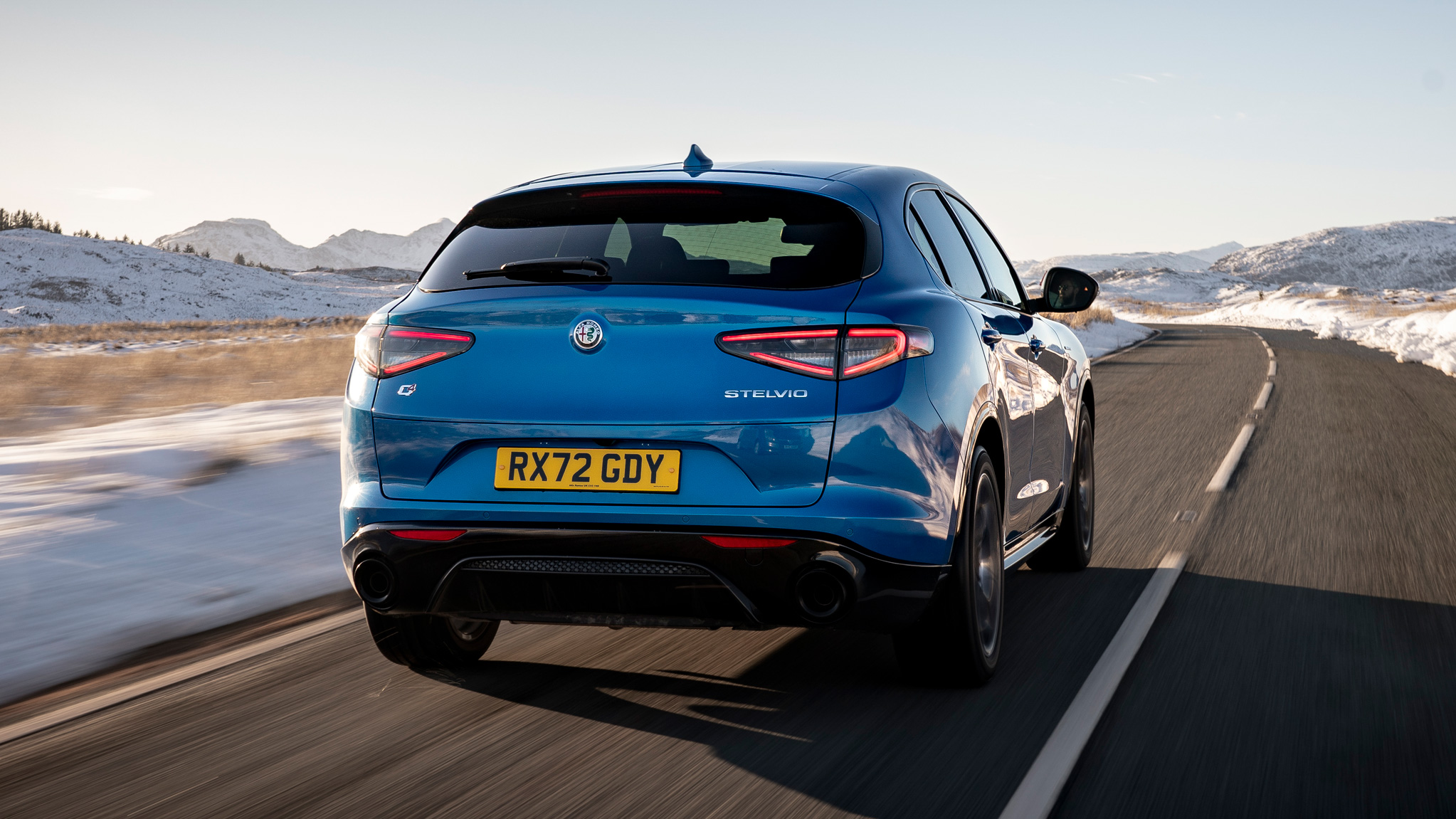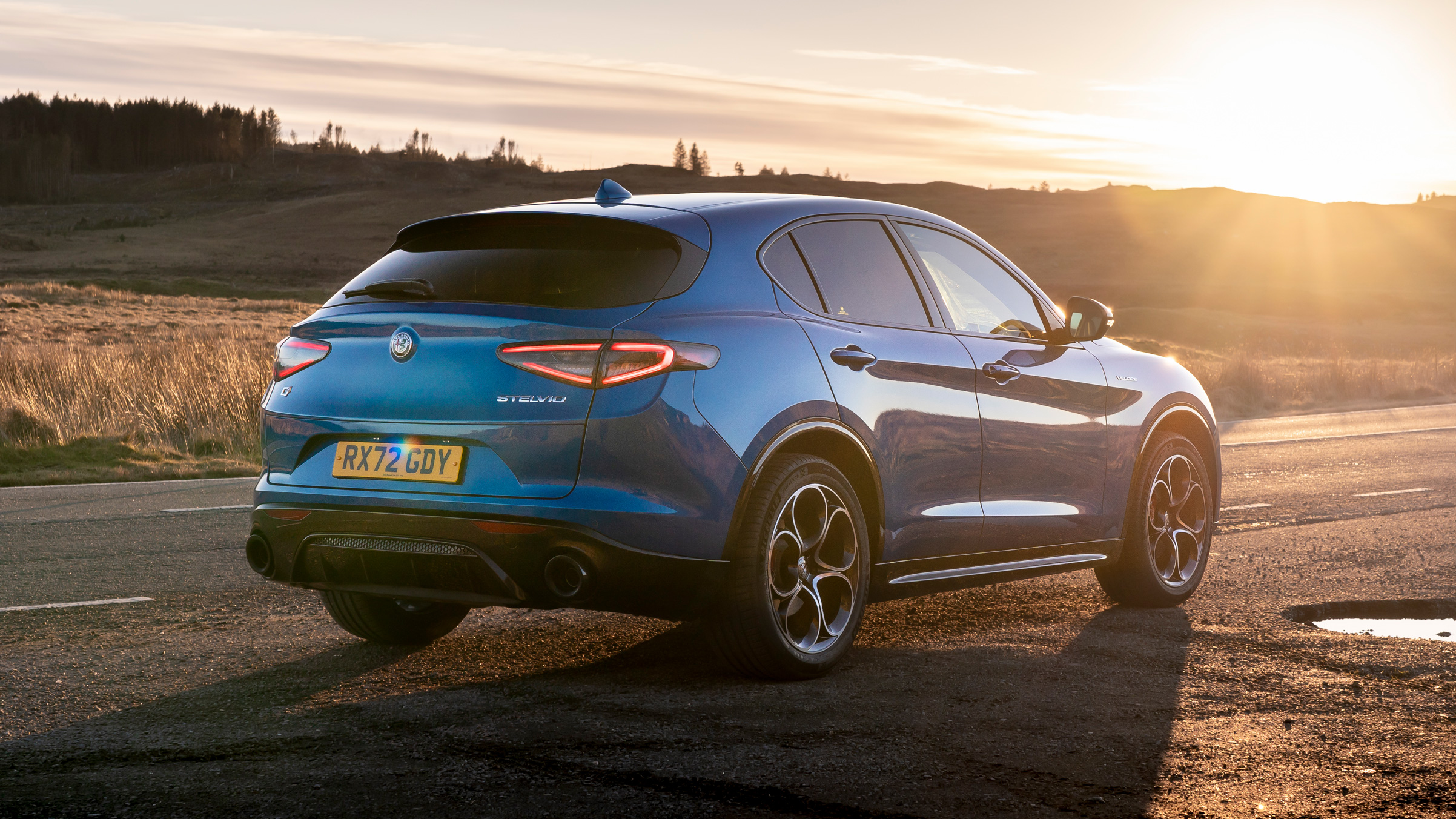
Good stuff
Fun to drive (for an SUV), comfy, refined
Bad stuff
Not without compromise, a few tech gremlins, does it look good enough for an Alfa?
Overview
What is it?
Another manufacturer has fallen at the altar of the SUV. The Alfa Romeo Stelvio was launched in 2017 when SUV sales were rocketing and the company was due a success story. If it was going to prop up the company, the Stelvio needed to be not just a great Alfa, but great full stop.
Luckily, it mostly was, which is evidenced by how subtly it’s changed in the years since. Even the latest update in 2023 basically only changed the lights. Before that it was a new suite of active safety systems and a touchscreen-operated infotainment system keeping things fresh.
While the Stelvio is based on the same platform as the Alfa Romeo Giulia saloon, you sit almost 20cm higher, and the line-up is now exclusively all-wheel drive. Alfa’s Q4 AWD system (rear drive in normal conditions, up to 50 per cent of the power reactively sent frontwards in low-grip conditions) is reserved for the 510bhp Quadrifoglio.
Run me through the engine options.
There are two. Well, technically three. There's a 2.0-litre 4cyl turbo petrol producing 280bhp and 295lb ft of torque, and a 2.2-litre 4cyl diesel that's good for 210bhp and 347lb ft. You're looking at 0-62mph in 5.7 and 6.6 seconds apiece.
Then you’ve got the mighty 510bhp 2.9-litre V6 of the Quadrifoglio performance model, which is something of an outlier. You can read more about it clicking this well-timed hyperlink, but it shatters the same sprint in under four seconds. Crikey.
Every single one is linked up to an eight-speed automatic gearbox as standard, with lovely long metal paddleshifters if you’ve ticked the option box (£295) or gone for a higher, sportier spec level.
This is very much an SUV for the road, isn’t it?
Well, it might manage a gravel driveway at a push. But yes. Tellingly, Alfa’s engineering chief, Roberto Fedeli (formerly of Ferrari), told us his aim was to exactly reproduce the Giulia in the way the Stelvio drives: a candid admission that modern customers like the idea of an SUV, but don’t want the roly-poly dynamics its higher centre of gravity brings with it. This is what engineers refer to as a ‘challenge’.
Did they succeed?
Fortunately, the Giulia platform with its double wishbone front, multi-link rear aluminium suspension is a good place to start. Here, the springs are longer than in the Giulia, but stiffer to counteract the extra height. There’s lightness, too, thanks to a carbon-fibre prop shaft as standard, engines with aluminium blocks, and aluminium skin for the bonnet, tailgate, doors and front wings.
All-in the Stelvio weighs around 1.6 tonnes, around ten per cent less than an equivalent BMW X3 or Porsche Macan, against which the Stelvio competes. You can add the Audi Q5, Jaguar F-Pace and Mercedes GLC to that list of rivals, too.
What's the verdict?
On the same road and same conditions, the Stelvio isn’t as much as fun as a Giulia and on a similar plain to the F-Pace, but then what did we expect? On the other hand, it’s more spacious and practical than a Giulia and might just get you out of a muddy car park.
All things considered Alfa has done an admirable job on converting its value into an SUV package. This is as emotionally engaging as the crossover market gets. Perhaps it isn’t as stirring as Alfas of the past, but this time, who knows: you might actually buy one.
The Rivals
Trending this week
- Car Review
Ferrari Amalfi
- Long Term Review
Is the Suzuki Swift still the best small car money can buy?









